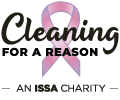Articles
Changes in Cleaning Chemicals Regulations in Europe
Categories: Distribution & Supply Chain, Government Affairs
By Laura Mahecha | May 21, 2018 << Back to ArticlesSeveral European Union (EU) regulations are impacting the market for janitorial cleaning products, most prominently:
- Registration, Evaluation, Authorization and Restriction of Chemicals (REACH), aimed at improving the protection of human health and the environment from the risks posed by chemicals
- Classification, Labeling and Packaging (CLP), adopted to clearly communicate to workers and consumers the hazards of chemicals through classification and labeling, and
- The Globally Harmonized System of Classification and Labeling of Chemicals (GHS), which went into effect in 2015, repealing Directive 67/548/EEC for the classification, packaging, and labeling of dangerous substances.
Another similar regulation is the Biocidal Products Regulation that came into effect in September 2013 and aims to improve the functioning of the biocidal products market in the EU, while ensuring a high level of protections for humans and the environment.
A supplier of cleaning chemicals (manufacturer, importer, distributor, retailer, formulator, or re-importer) is obliged to comply with the CLP regulation and classify, label, and package chemical substances and mixtures in accordance with it. A supplier must notify the European Chemical Agency (ECHA) of the substance’s or mixture’s classification and labeling within one month of placing it on the market for the first time.
The introduction of the CLP regulation provides the following advantages for the cleaning industry:
- Enhances the scientific basis for international accord on the safe use of chemicals and provides a technical basis for the management of chemicals
- Places an emphasis on both human health and the environment with the development of sustainable practices
- Allows for internationally effective communication channels related to the labeling of cleaning chemicals to protect workers, consumers, and the environment.
However, chemical suppliers will face some challenges due to the introduction of the CLP regulation:
- Some products needed reclassification, triggering additional expenses for manufacturers
- The simplicity of the classification system makes it more difficult for cleaning personnel to distinguish between products that are relatively safe and products that are relatively hazardous
- Some substances are relabeled with more severe hazards than before due to the tendency to opt for the safest option. This over-cautious labeling results in more frequent usage of personal protective equipment and thus a greater cost to end users.
- Smaller manufacturers are placed at a disadvantage as they may not have access to data, and the cost of obtaining expert consultation may be prohibitive.
The eco-sustainable pressure by EU authorities, coupled with a push by several leading manufacturers and sensitization of end-users, are strengthening the trend toward environmentally friendly and safe chemicals. End-users are becoming increasingly sensitive to environmental issues and safety in use, which leads to increased demand for safe products. Certain end-use segments are more affected than others, most prominently the public sector, due to the European Green Public Procurement Criteria (GPP), promoting environmentally friendly procurement by public bodies. In Italy, the Ministry of Environment has adopted its own GPP in 2012, the CAM (Minimum Environmental Criteria) defining the environmental criteria in public administration buying procedures. It is estimated that in 2014 over 50 percentof purchases by public authorities in Italy were eco-friendly, and this share is expected to grow steadily in the future.
Learn more about the European professional cleaning market size, end-use segment share, supplier share, growth, trends, and opportunities with two Kline reports: Janitorial Cleaning Products in Europe and Foodservice Cleaning Products Europe.
About the Author.
Laura Mahecha is the I&I Industry Manager for Kline & Company. For more information about Kline’s industrial and institutional practice and market research studies and databases, please visit www.klinegroup.com.





